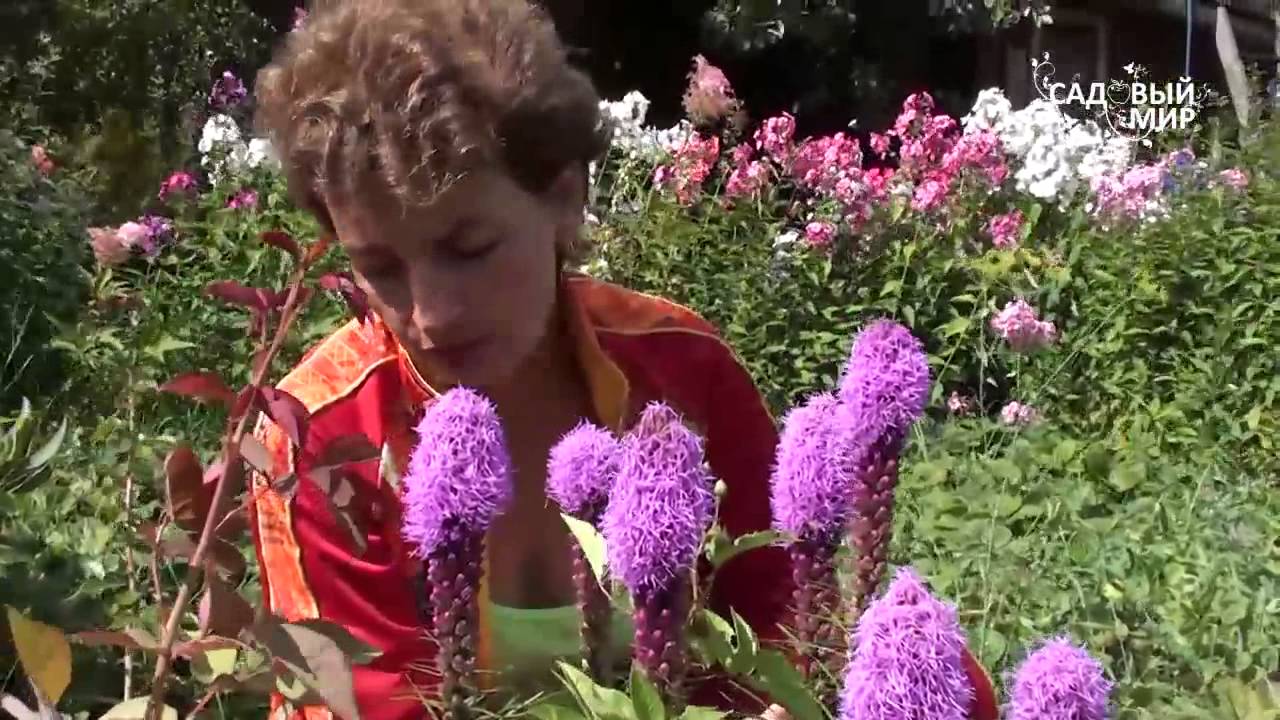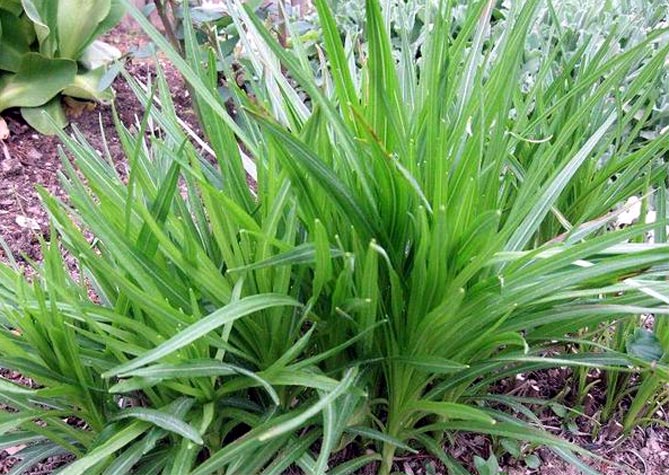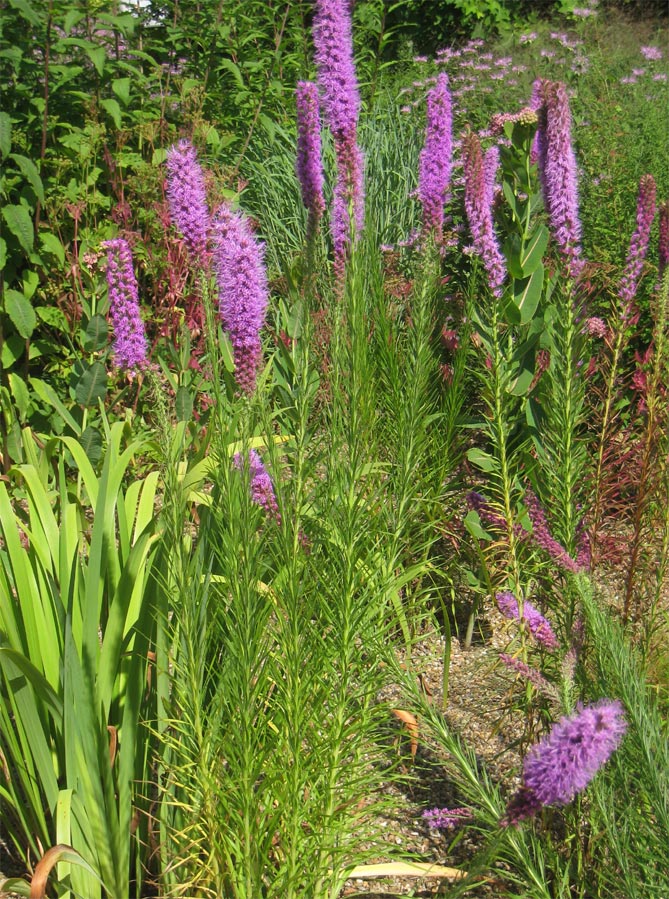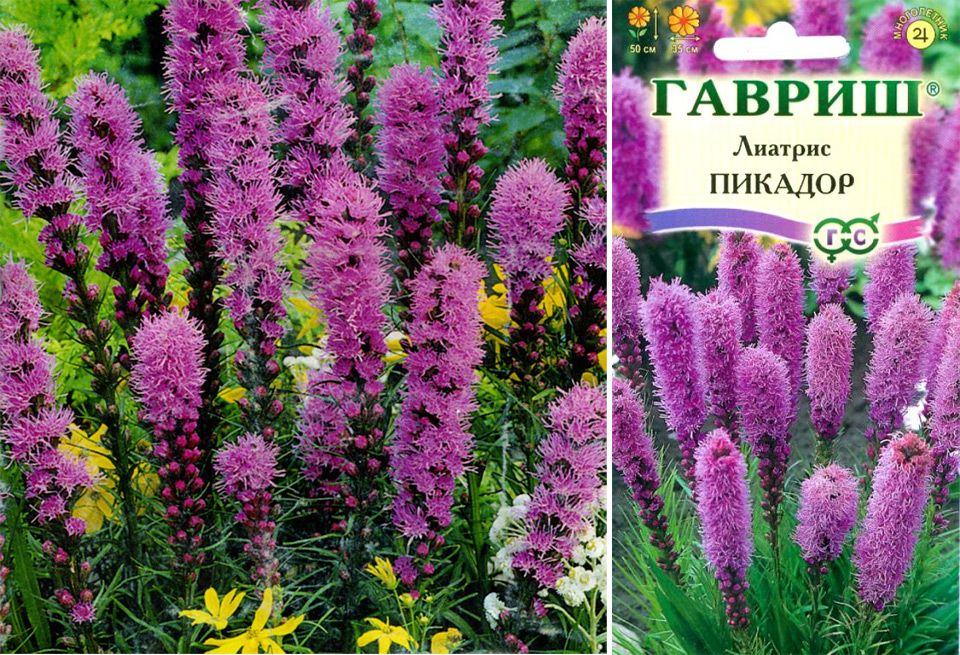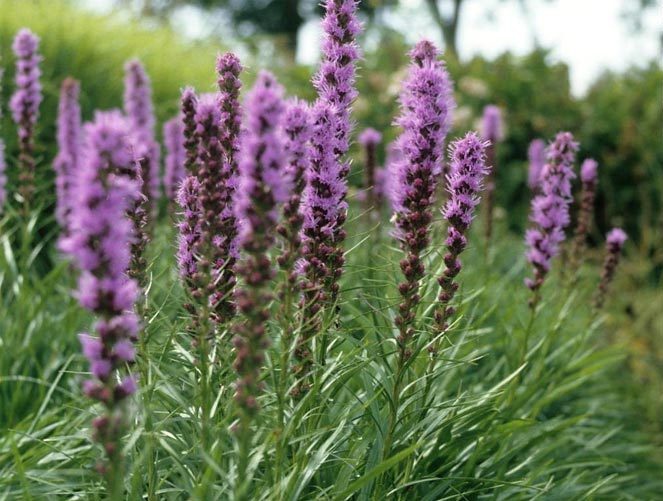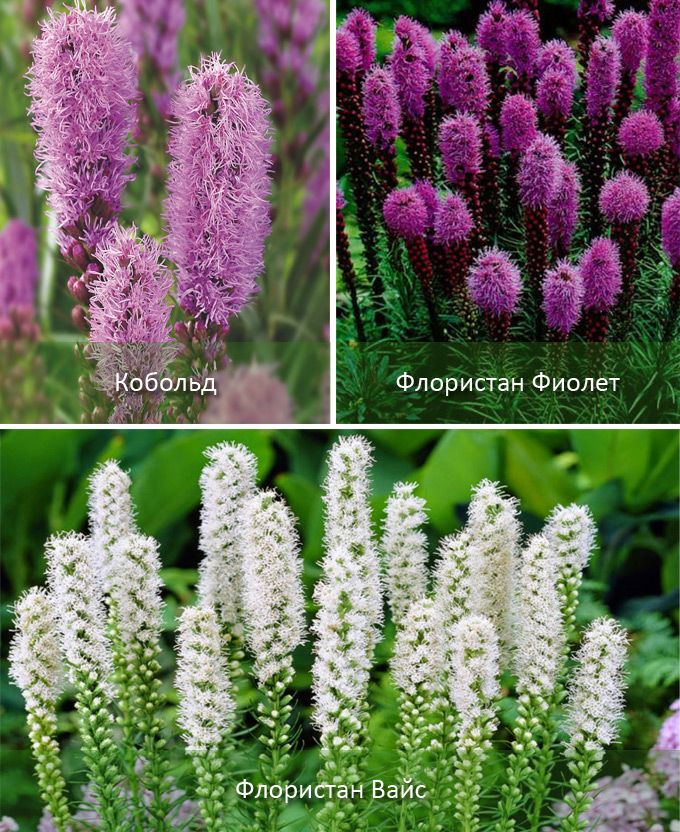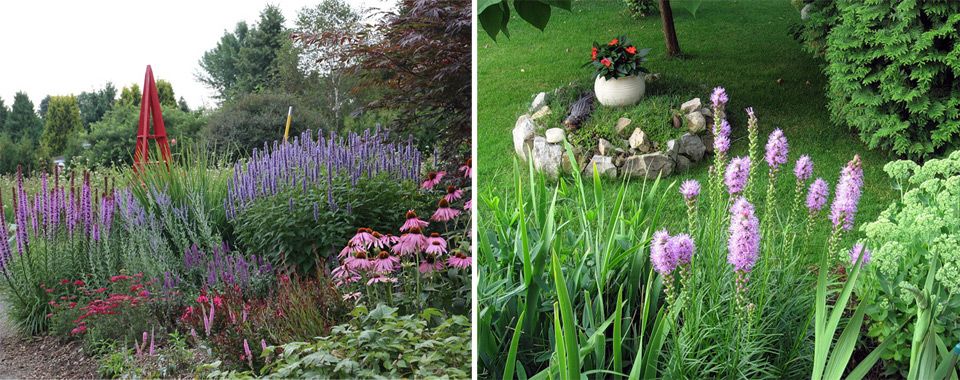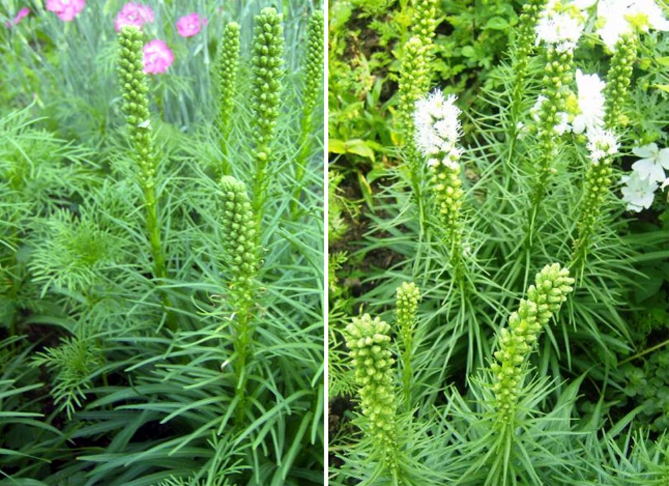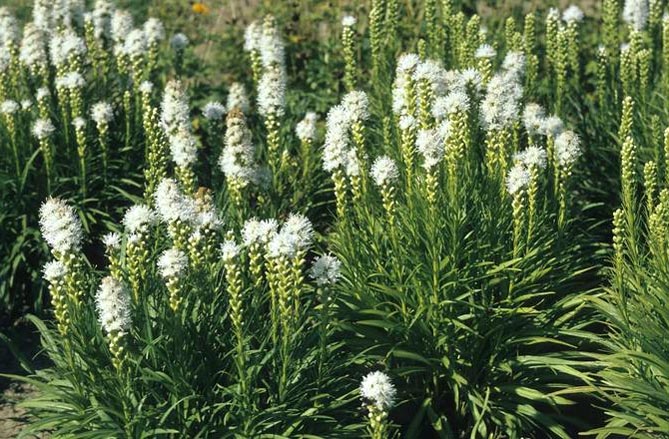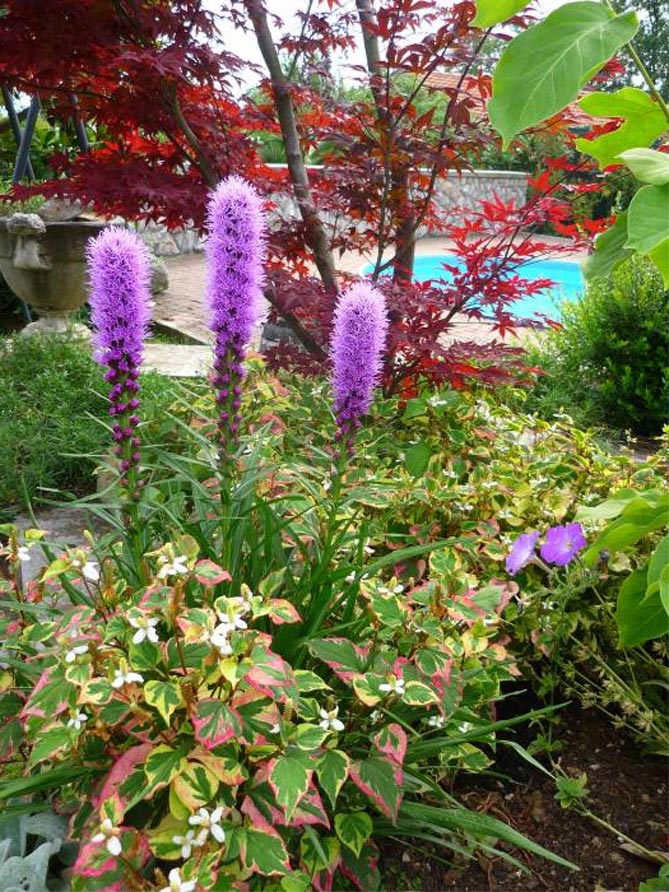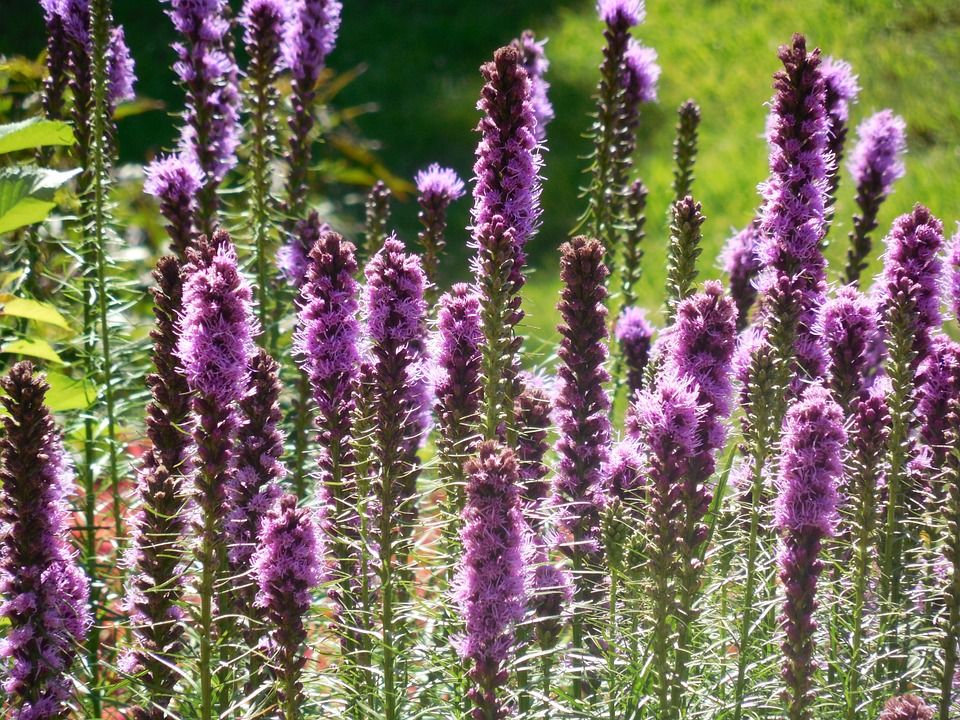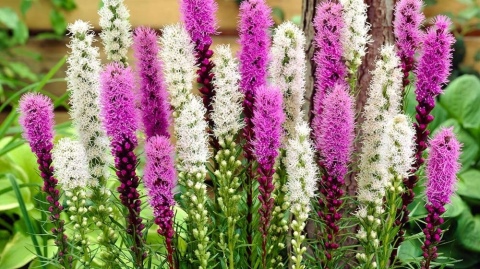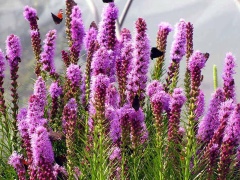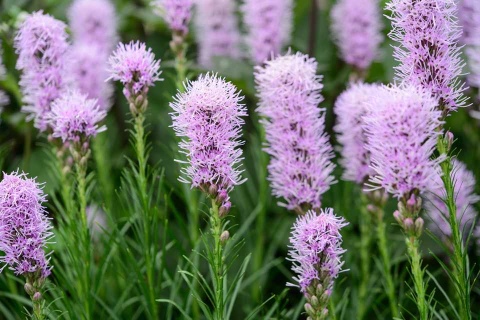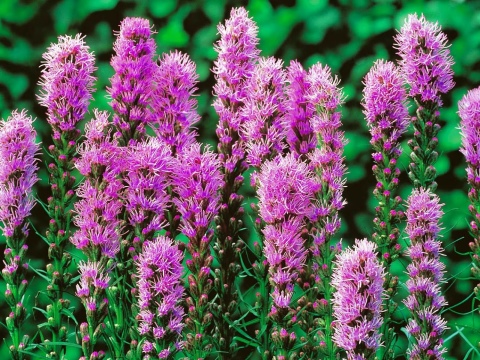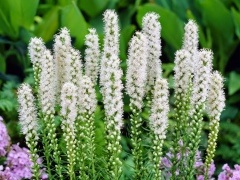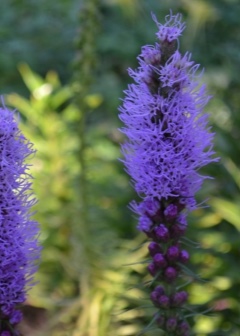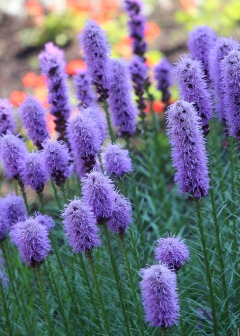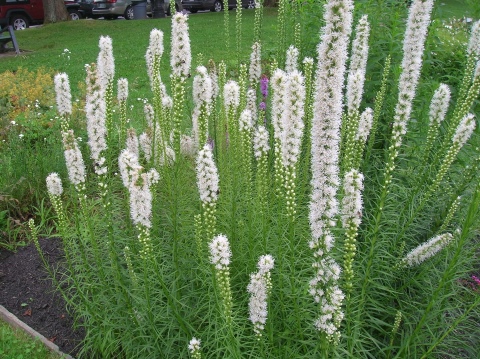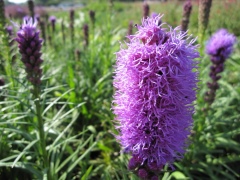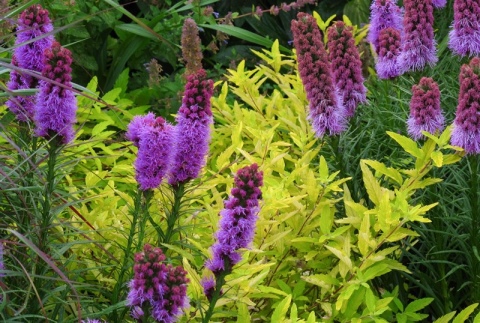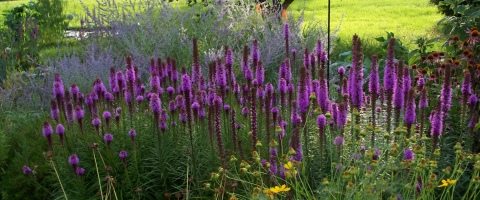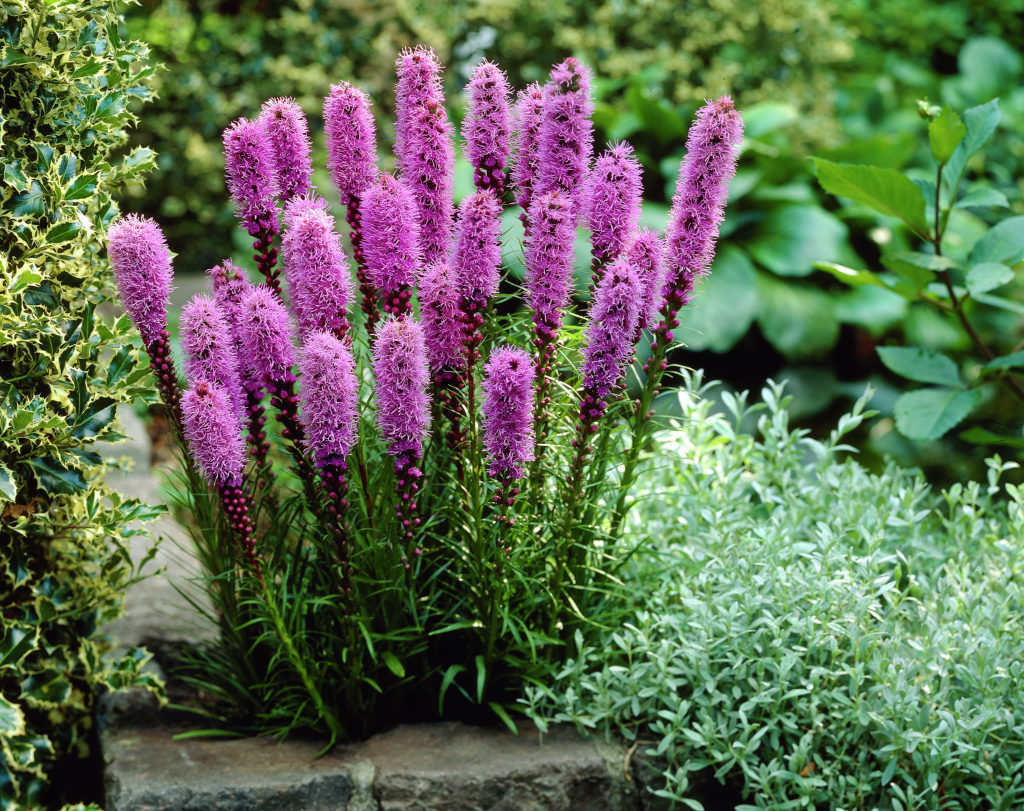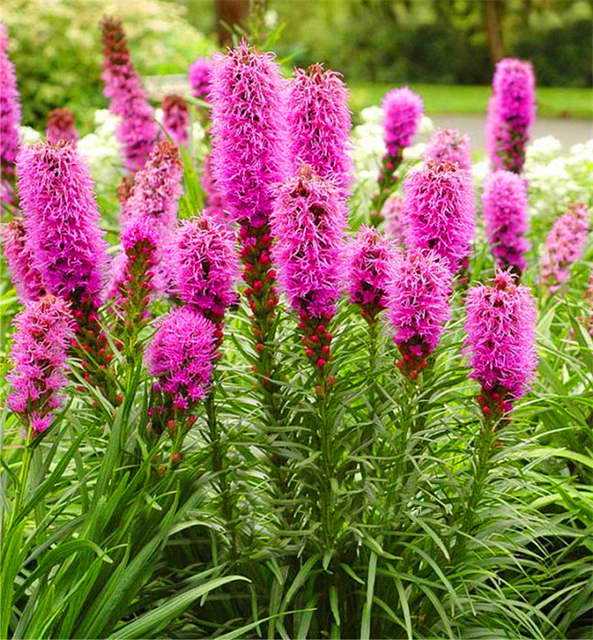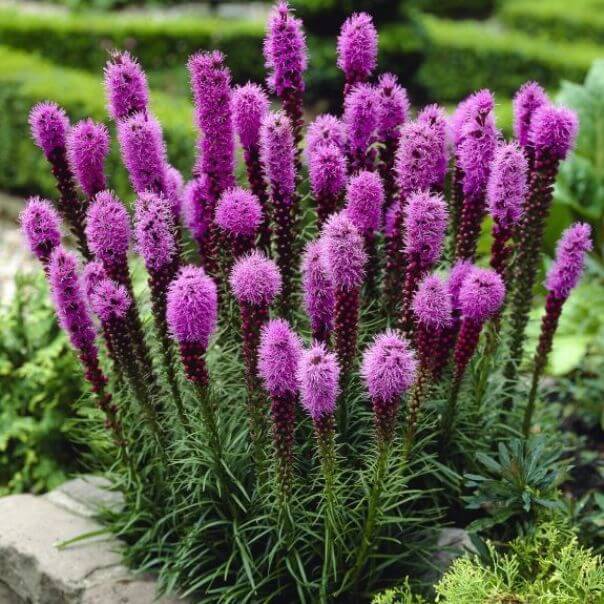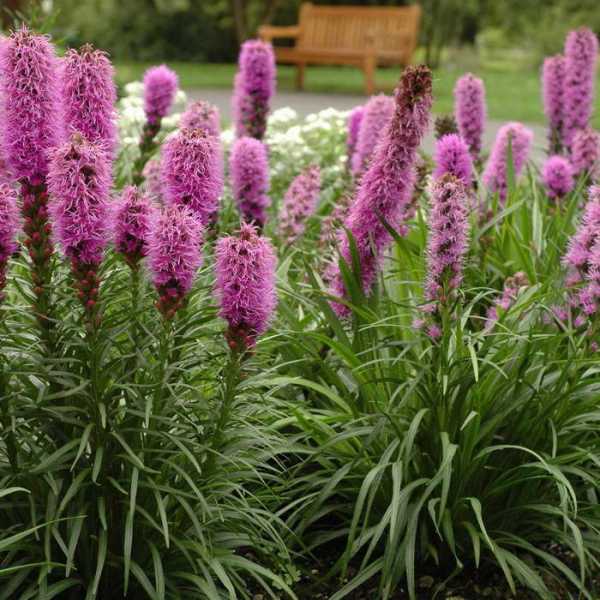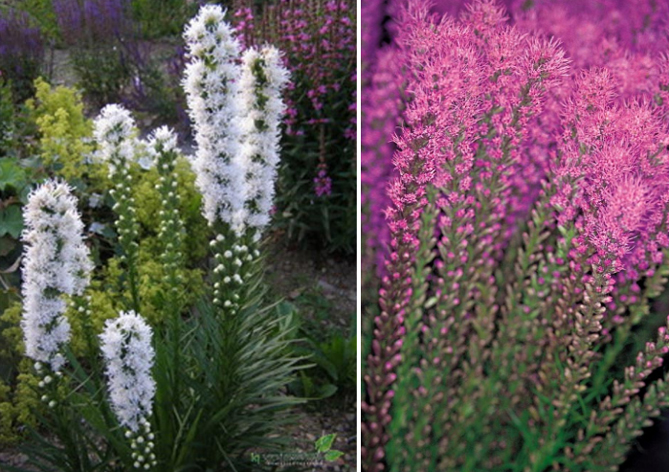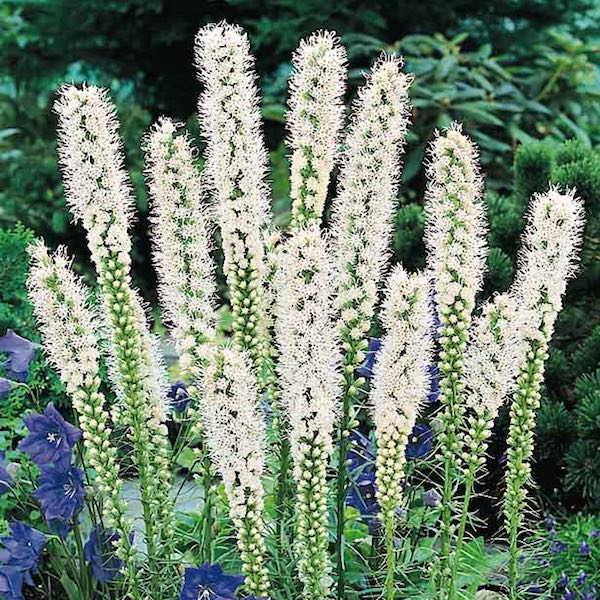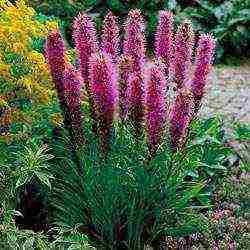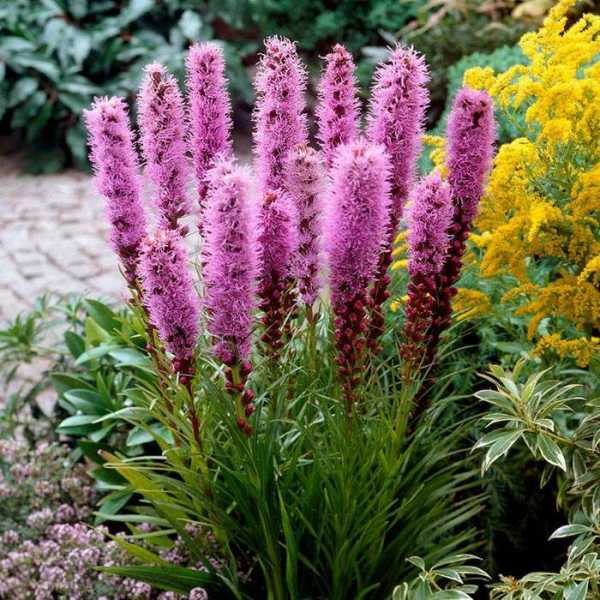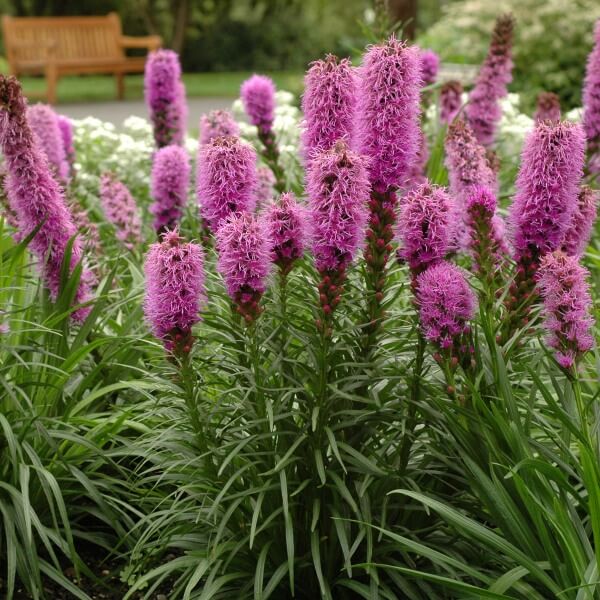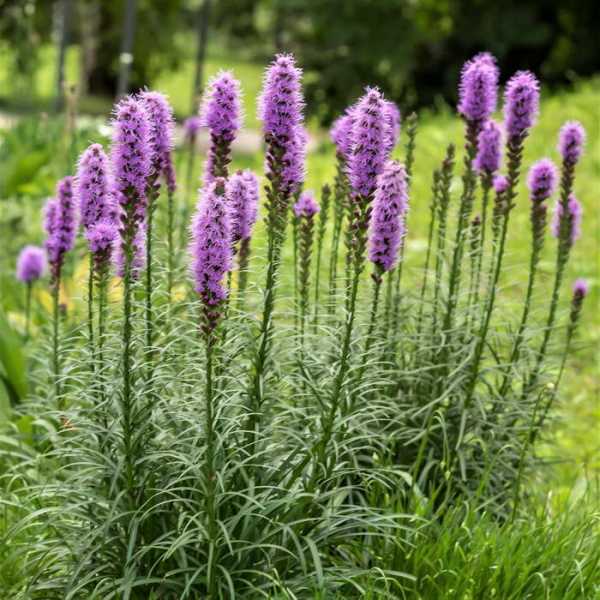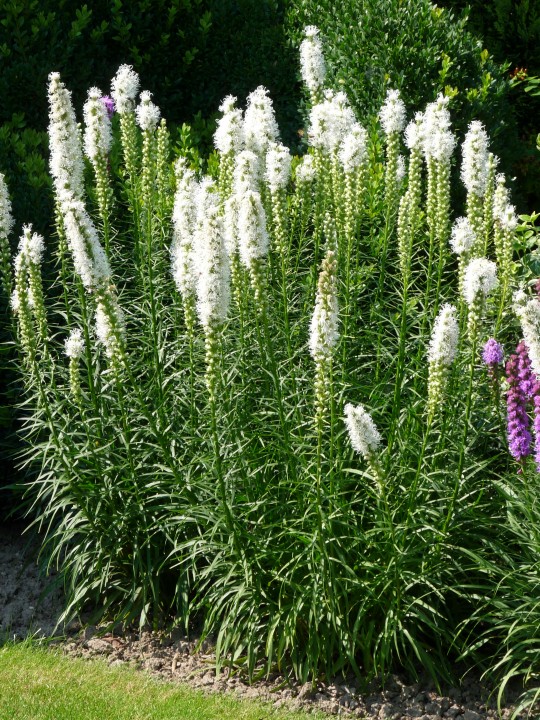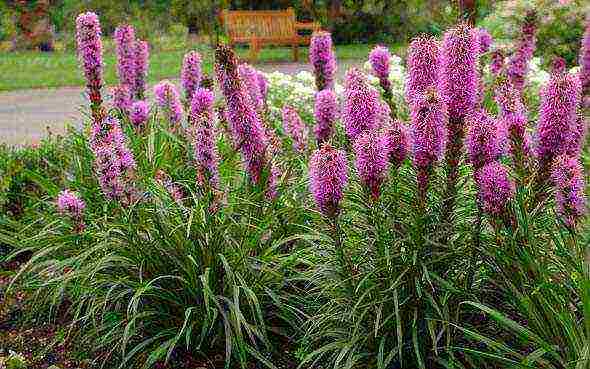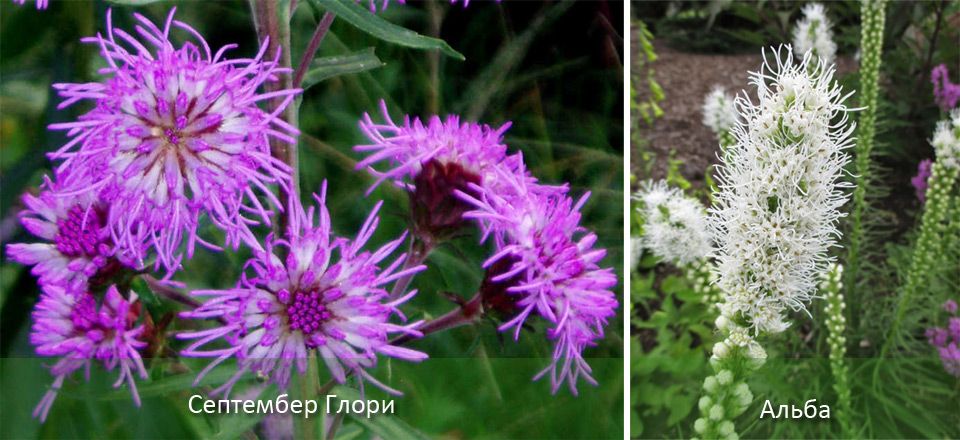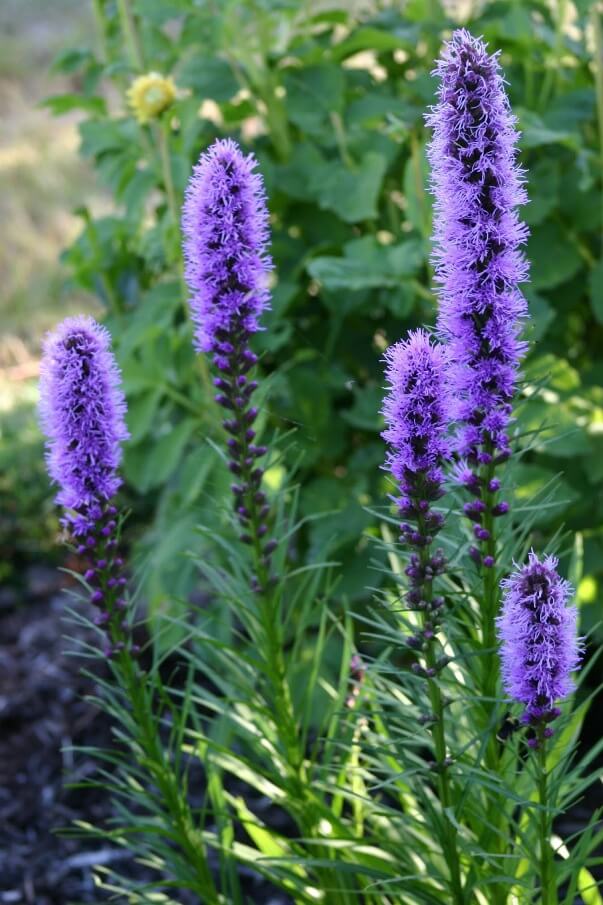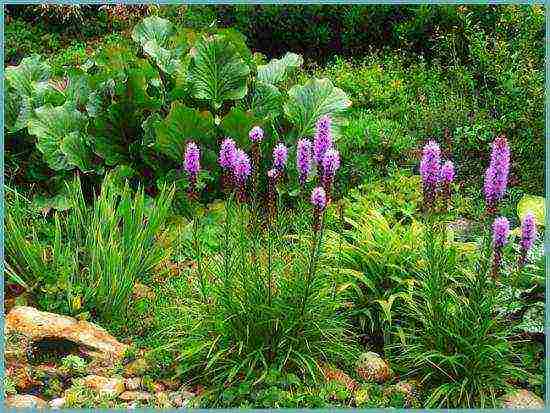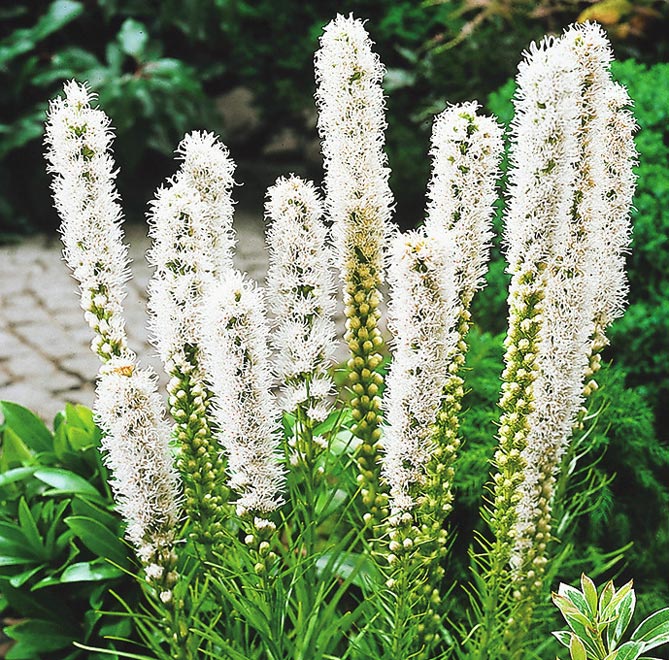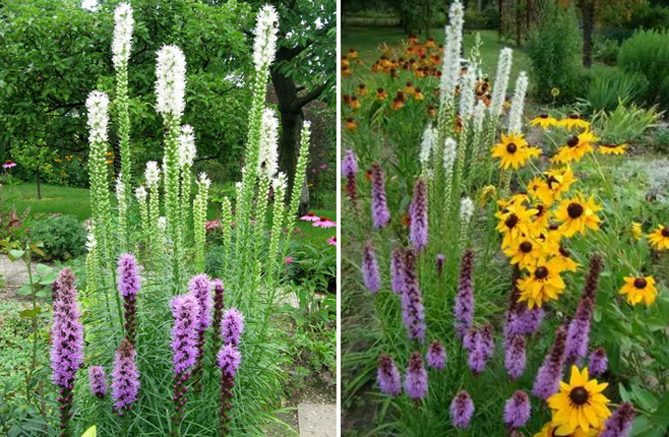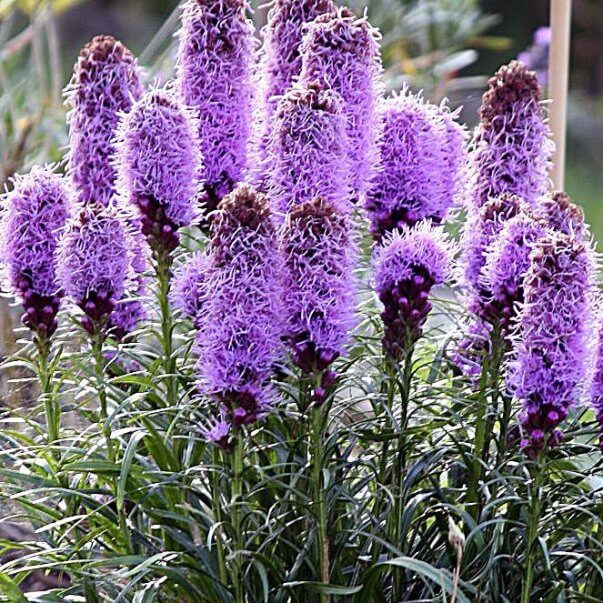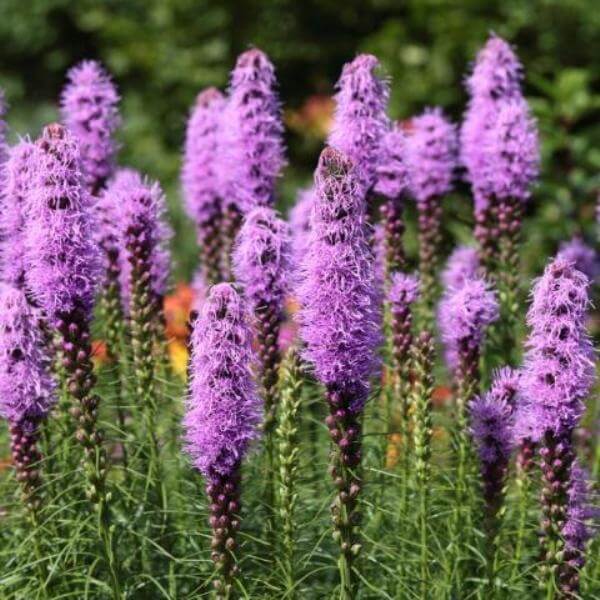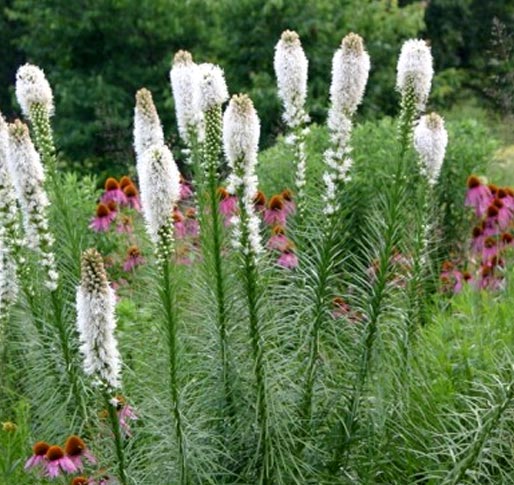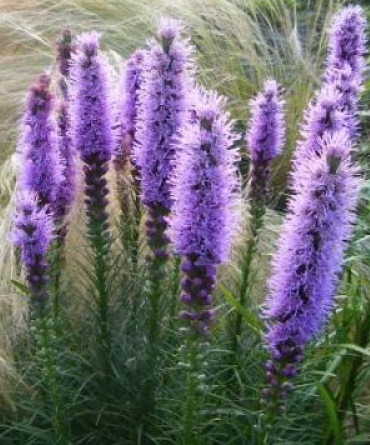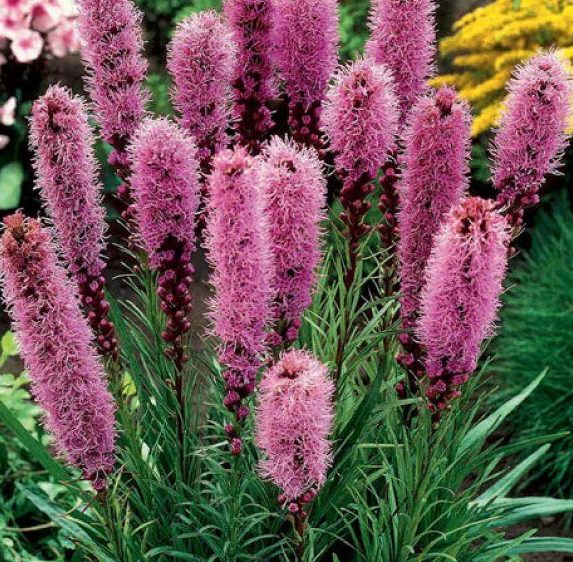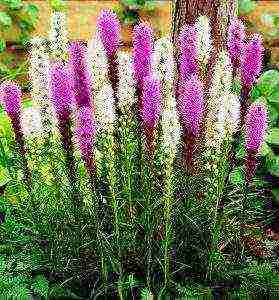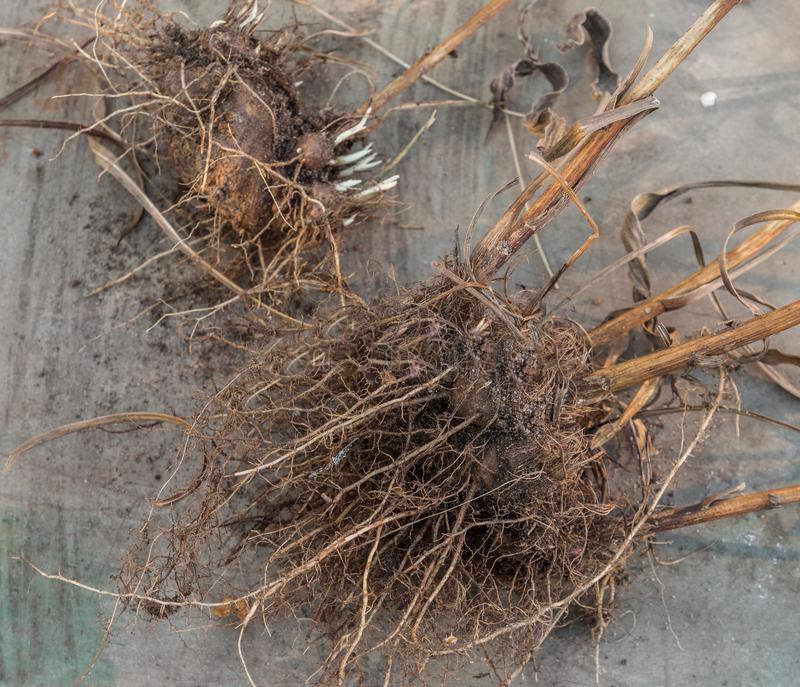Rules for caring for Liatrice after planting
The plant is not capricious and truly bears the title of "flower for lazy gardeners". Care in the open field for the culture lies in its watering, loosening the soil, removing weeds. Younger liatrices will require more attention. Once the shrub grows, it retains moisture and interrupts the growth of weeds.
Watering the plant
The flower loves moisture. Although it can be highlighted that it will easily survive a slight drought. What the plant doesn't need to do, so it is to overflow the soil. Excess water will provoke root rot. The amount of liquid poured out depends on how massive it has grown. On average, a bucket of water is sufficient for watering. You need to pour water until the soil absorbs it. It is optimal to water more often, but not much than to fill the bush and injure the crop.
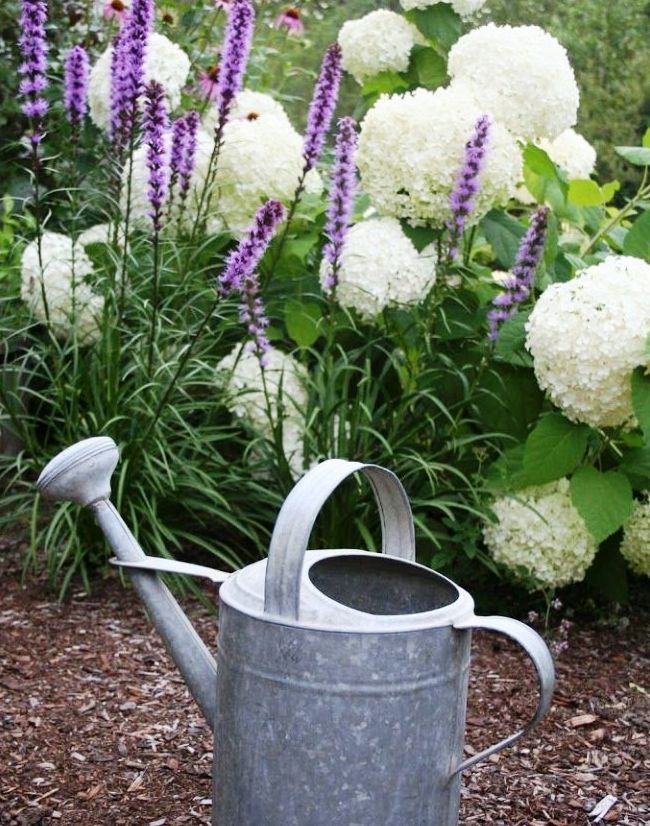
Weeding and hilling bushes
Periodically, the liatris is huddled by pouring a little soil upstairs. Since its roots are close to the surface and can become bare over time, for example, during a period of prolonged rains.
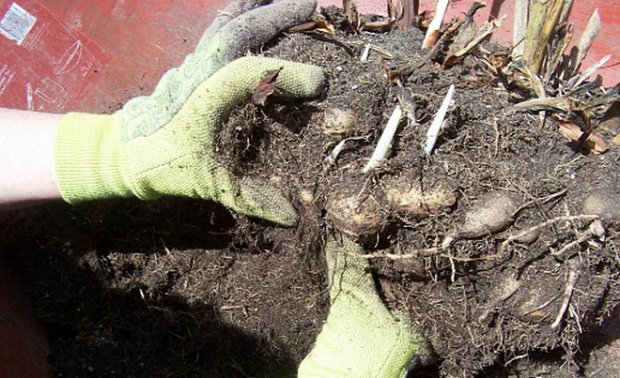
Weeding is carried out as the weeds grow. As we mentioned above, overgrown flowers block the growth of weeds. Therefore, the gardener should not have any problems in this matter.
Mulching
When weeding the beds, it is imperative to carry out mulching. It is not necessary to fluff the soil at the base of the flower. Because of the roots on the surface of the earth. Mulch the soil after watering / rainfall.
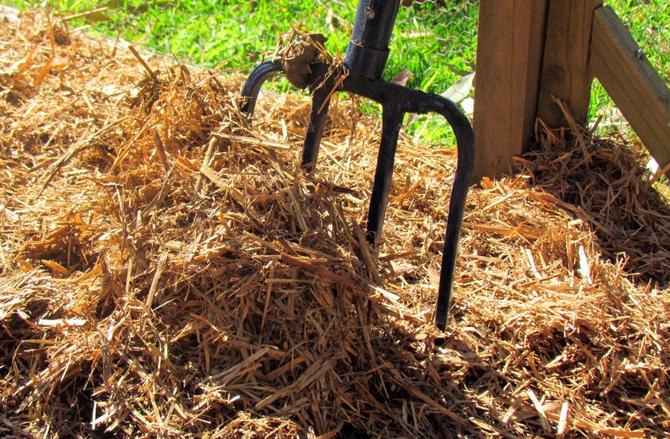
Examine the flower carefully, add some mulching materials if necessary. This procedure is also recommended to be carried out before wintering.
Plant feeding
Liatrix is fertilized three times a season using potassium and phosphate preparations. If the leaves of the flower begin to change color, feed the bush with nitrogen. The plant does not need other nutrients.
Trimming and tying to a support
Certain varieties of crops grow up to a meter. For this reason, it is imperative to tie a flower. Drive in sticks next to the bush and pull the wire (tight rope). Tie a plant to the structure. If this is not done from the mass and unfavorable weather conditions, the stems will break and the flower will die.
If you see that some inflorescences have wilted, cut them off. This will make it possible to improve the aesthetic appearance of the flower. And the color of the leaves will become even more saturated. Often the plant is pruned at the end of the flowering period.
Transfer
The process of planting and caring for a Liatris flower in the open field is not so difficult, but you need to know how the culture is transplanted. Adult flowers are transplanted at the same time as dividing the tuber every 3-4 years. Do not spare time for this procedure. Without it, the pet will become smaller and eventually disappear. So, how to transplant:
- The plant is taken out of the ground, the roots are carefully cleaned.
- The bush is cut into pieces with a sharp knife. Each division should have its own root collar with roots.
- New bushes are planted in holes 8-10 cm deep at a distance of 25-35 cm from each other.
- The wells are filled 1/3 with humus, covered with earth, tamping well.
- After all the above manipulations, the soil is watered and mulched.

It is recommended to replant Liatris in October. Then, in the new season, young plants will get stronger, and will delight the grower with quality flowering. If, due to the current situation, you could not transplant the culture in the fall, do it in the spring. However, in this case, flowering may not come or come with a delay.
About Liatrix "Blue"
The original purple shade with a red tint of amazing panicles fits perfectly into the exterior of the cottage. The height of the stems does not exceed 50 cm.The inflorescence accounts for almost 35 cm. This makes it possible to plant a crop along the curb or make a hedge out of it, but only in miniature. You can admire it for 30-45 days of the holiday season.
The scorching sun and lack of moisture will in no way affect the liatrix spikelet "Blue". He will remain the same attractive and charming. At the same time, the flower does not tolerate rainy summer. Dampness caused by stagnant water leads to root rot and powdery mildew. It is also not suitable for clay, as well as heavy types of soils.
Reproduction of Liatrice by division and tubers
Reproduction of this culture by dividing the bush is quite simple, while the plants take root in new places and continue to grow and develop very successfully.
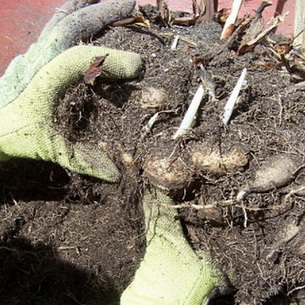

By dividing the bushes, liatris is propagated in spring or autumn. To do this, choose a large, overgrown specimen, dig it up and separate several shoots, trying not to damage the neighboring ones. Each delenka should have a healthy, intact root neck.
After that, the seedlings are placed in prepared holes about 15 cm deep, 1/3 filled with humus. Parts of the bush are planted at a distance of 35-40 cm from each other. The pits are covered with soil, lightly tamped around the plots, irrigated and covered with a layer of mulch. After planting liatris seedlings in open ground, they are regularly looked after, this will help them quickly get stronger and continue their development.
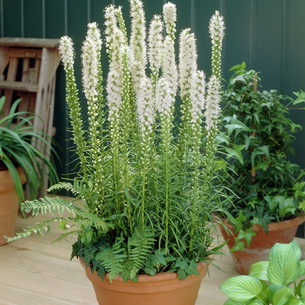
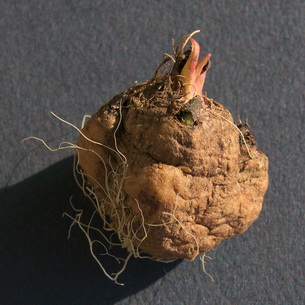
To grow liatris, those parts of the rhizomes are selected from the tuber, the size of which is at least 2 cm, and carefully examined for damage or rot. Then they are separated from each other with a sharp knife.
It is important to correctly place part of the tuber into the hole. This must be done so that the notch on the process of the rhizome is directed upward when planting in the hole, because then shoots will develop from it
If there is no such depression, then it is better to put the tuber on its side.
The planting hole should be fairly deep. A layer of drainage is laid on the bottom, then the tuber of the liatris flower is planted, covered with earth, after that, care is carried out immediately, abundantly watering the pit with the tuber. Sprouts will appear in this case in a month. It is believed to be the fastest way to get a new plant.
If the tubers were purchased in a store, you should hold them for some time in a solution of potassium permanganate or "Kornevin".
Reproduction by tubers should be performed from May to September, this time is most optimal for the plants to successfully take root in a new place.
Subject to the rules for planting perennial liatris, caring for it will bring a greater effect, as opposed to if the technique of this work is not followed.
Side effects
| Systems and organs | Negative effects |
|---|---|
| Blood flow system and heart |
|
| CNS |
|
| Digestive organs |
|
| Allergies and skin |
|
| Bone and muscular apparatus |
|
| General reactions |
|
When using Betaloc, side effects are usually mild or reversible.
As a result of the research, the following possible side effects have been identified:
In rare cases, there is arrhythmia, gangrene, increased nervous excitability, impotence / sexual dysfunction, anxiety, memory impairment, hallucinations, depression, dry mouth.
Some patients also had liver dysfunction, hepatitis, hair loss, photosensitization, exacerbation of psoriasis, rhinitis, visual impairment, conjunctivitis, eye irritation, ringing in the ears, impaired taste, arthralgia, thrombocytopenia.
Planting site, soil
Planting and caring for a lyatrix begins with the selection of a suitable site. He prefers fertile soils with easy permeability and slightly acidic reaction, in the range of 6-6.5 units. The culture loves sunny places where the rays hit the shrubs for 6 or more hours.
On a note! When grown on sandy and dry ground, in partial shade, Liatris flower blooms less. If it is planted on sandstone, then growth slows down, and the inflorescences are shortened.
The long-lived variety does not tolerate boggy and heavy soils - in such places it is threatened by the spread of tuber rot. When planted in flower containers, the substrate is made from peat, clay and perlite (sand).
Sowing Liatris seeds in open ground
Seed material is sown in late autumn or early spring - they are not affected by frost. Before carrying out work, they are soaked for 8 hours in a solution of humate. The landing site is pre-dug up, humus is added to it at the rate of 1 bucket per m2. In the soil, grooves are made up to 1.5 cm deep, after planting the seeds, they must be sprinkled. With the seed method of propagation, the culture will receive full growth no earlier than 2-3 years after planting.
Liatris seeds
Planting Liatris in open ground
The culture can be grown in seedlings, young growth is planted in the ground 50-60 days old. Seed material is pre-hardened, processed and sown in containers with disinfected soil.
Sowing work is carried out in January or March, when planting, the seeds are buried by 1 cm. The containers are covered with glass or plastic wrap and sent to a warm room with a temperature regime of 22-25 ℃ above zero.
Additional Information! When the first sprouts appear, the temperature is lowered to 16-18 ℃ above zero, the boxes are transferred to a lighted place.
After the formation of the first two leaves, the young are seated in separate pots, a month later they are sent to a larger container. Landing under the open sky is carried out after the end of the threat of the return of night frosts. During planting procedures, a distance of 20 to 25 cm is observed between the bushes.
Landing in the ground
Landing for the lazy
Liatris spikelet (spikata in Latin) is loved for its "docile" character. Still, a place for it is selected bright, warm and spacious. The soil must be fertile, so it is fertilized with rotted manure, compost or minerals. They practice two methods of growing "blazing stars": seeds and tubers.
The seeds fall into the ground, take root and - forward
Sowing is carried out in the spring - at the beginning of April or in the fall - at the end of October. The bed is first dug up, top dressing of natural origin is introduced, and then it is loosened and irrigated with a small amount of water. At the bottom, drainage is made from stones, sand or pebbles. The holes are formed 1.5 cm deep, making them at a distance of 10 cm. After germination, the seedlings are seated in a permanent place. Three years after planting, liatris spikelet will delight the gardener with its majestic flowers.
For the southern regions, it is not necessary to wrap up the plant for wintering. In the northern parts of the country, it is recommended to cover it with mulch or burlap. This also applies to areas with snowless winters.
The tubers are not pretty, but strong
This is one of the fastest and most reliable breeding methods. When the green foliage leaves in the fall, the bulbs are dug up, the soil is cleaned off and divided into several parts. The diameter of each tuber is from 2 cm. After that they are sorted and sent to dry in the attic or in the pantry.
In May / August, small depressions of 7-10 cm are formed in the prepared area. They are filled with humus (1/3 of the pits).The step of the arrangement of the bushes is 20 cm, in some cases 30 cm.
The mother bush is divided into tubers. They do this even during flowering. At the same time, making sure that the young seedling has a strong root collar and healthy shoots. The distance of the holes is 30 cm, the depth is 20 cm.
Signs of attention to the plant
As noted, planting and caring for liatrix spikelet does not require special professionalism and skills. The culture can not be watered for a long time. However, loosening and hilling the land around the bush is a vital procedure. Mulching will make the soil airy and soft. By regularly removing weeds, the grower prolongs the life of the flower. The application of mineral fertilizers (in the spring - nitrogen-containing, in the summer - potassium-phosphorus) contributes to the abundant flowering of liatris spikelet. With such signs of attention, the flower bed will turn into a majestic and sophisticated decoration of the garden.
Features of Liatrix

Liatris is a perennial. This rhizome plant has branched or simple standing shoots that are densely leafy. Linear pointed leaf plates can be alternate and whorled. Tuberous roots are outwardly similar to bulbs, and they are interconnected by thin roots. If you choose the right place for such a flower and take good care of it, then it can grow up to 200 centimeters. The color of tubular flowers can be purple-violet, red, purple-red, pink, and also white. The flowers are part of the baskets, collected in half-meter inflorescences, having a racemose or spike-like shape. Flowering begins in the summer, while flowers bloom from top to bottom in turn. The fruits are ribbed elongated achenes, on the surface of which there is a pile. Such a plant is planted as a solo one, as well as together with flowers such as: brunner, phlox, gypsophila, verbena and armeria. Cut flowers can keep their freshness in a bouquet for up to 1.5 weeks. Dry inflorescences are great for making winter bouquets.
Unpretentious garden flowers Liatris. Garden World website
Pests and diseases
Diseases practically do not affect the shrub, the main problems are:
- root rot - which occurs when a crop is planted in places with heavy, poorly ventilated soil, located in the shade;
- powdery mildew - the disease affects foliage in constantly rainy weather.
Fungal infections are more likely to occur on weakened or old bushes. Compliance with agrotechnical rules and timely division of adults is the best prevention of various diseases.
Dangerous crop pests include:
- Vole mice that like the sweet taste of tubers. Professionals prefer to plant bushes in special baskets, previously buried in the soil.
- Medvedok is a soil insect parasite that loves to gnaw at the root system of a culture.
- Slugs - their appearance is often associated with rains and bad weather.
You should know! Experienced gardeners prefer to use Medvetox and Groza for pest control.
The vole mouse is a pest of Liatris
Planting site and soil
Liatris prefers open spaces with good lighting. He does not like to grow in lowlands with stagnant water, in shaded areas, in places with a close occurrence of groundwater. The perennial grows well on fertile air and water impermeable weakly acidic soils with a pH of 6.0-6.5.
The plant can grow and bloom on poor sandy and sandy loam soils, but the bush will be smaller, and the peduncles and flowers are smaller. Heavy clay soils are not very suitable for the cultivation of perennials.
For planting in pots and containers, the soil is prepared in the following proportions:
- peat - 60%;
- sand or perlite - 10%;
- sod land - 30%.
Sowing Liatris seeds in open ground
Perennial seeds ripen during the growing season on peduncles.Even in temperate climates, they can be harvested and used for planting. The germination rate of planting material does not exceed 50%. For liatris seeds to sprout, they need stratification - staying in a cool place. When sown in November, this process will occur naturally during wintering. When sowing in spring, the seeds need to be kept in the refrigerator for about a month.
With seed propagation, the obtained seedlings do not fully retain the properties of the mother plant, especially if several varieties grow on the site.
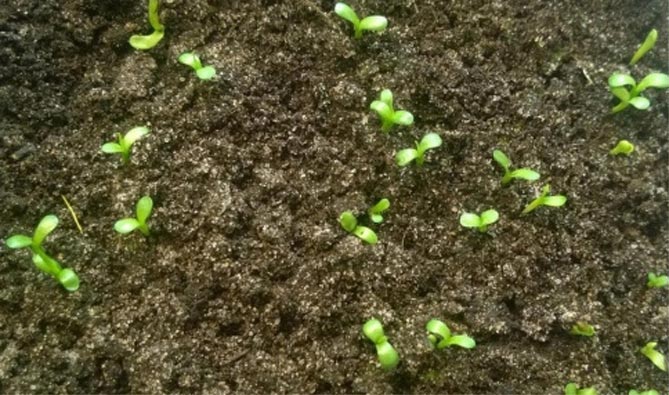
Seedlings in the open field
Before sowing, calibration is carried out in salt water, discarding hollow, immature seeds. The planting material is soaked in a solution of potassium humate (0.5 g per 1 l of water) for 12 hours. Pre-planting preparation improves germination, accelerates seed germination.
The planting site is cleared of weeds, dug up with humus or compost - 1 bucket per 1 m². Grooves are made at a distance of 10 cm, the seeds are planted at a depth of 1 cm. When planting in spring they sprout in two weeks. When real leaves appear, the seedlings are thinned out.
Note! When sowing seeds in open ground, plants begin to bloom only in the third year.
Planting Liatris in open ground
A perennial can be grown in seedlings by planting seedlings in the soil at the age of 50-60 days. Seeds that have undergone stratification and pre-planting are sown in a container with pre-disinfected soil. The composition of the substrate should be lightweight, breathable. Sowing is carried out in January-March, the planting material is deepened by 1 cm. The container with the crops is covered with film or glass, placed in a warm place with a temperature of 22-25 ° C.
Important! When seedlings appear, the temperature is reduced to 16-18 ° C, the box with plantings is placed in the most luminous place. When 1-2 true leaves appear, the seedlings dive into separate small pots, after a month they make a transfer in a container of a larger volume
Seedlings are transplanted into open ground when the threat of night frosts has passed. The distance between plants is maintained at 20-25 cm
When 1-2 true leaves appear, the seedlings dive into separate small pots, after a month they are transshipped in a larger container. Seedlings are transplanted into open ground when the threat of night frosts has passed. The distance between plants is maintained at 20-25 cm.
Watering and loosening the soil
Spikelet liatris belongs to drought-resistant plants that better tolerate a lack of moisture than an excess of it. For most of the growing season, rainwater is sufficient for the plant. In hot dry weather, the flower is rarely watered, but abundantly, so that the quality of flowering does not deteriorate.
Note! Excessive watering can lead to decay of the perennial root system. In the process of growth, the root system of the lyatrice is exposed, the corms appear on the surface of the soil
With the help of loosening, which must be carried out very carefully so as not to damage the roots, the tubers are buried in the ground. The flower responds well to root mulching with peat, mown grass, fallen leaves
This measure protects the root system, serves as a fertilizer, and prevents diseases.
In the process of growth, the root system of the lyatrice is exposed, the corms appear on the surface of the soil
With the help of loosening, which must be carried out very carefully so as not to damage the roots, the tubers are buried in the ground. The flower responds well to root mulching with peat, mown grass, fallen leaves
This measure protects the root system, serves as a fertilizer, and prevents disease.
Outdoor care for lyatrix
How to water
The plant will better tolerate short-term drought than waterlogging of the soil. Excessive moisture leads to decay of the root system, so you should take care of good drainage so that the rhizome does not get wet during the period of prolonged rains.Water as the top layer of the soil dries out, it is better to water more often, but add water in small portions. The amount of water depends on the size of the bush; in case of severe drought, about 10 liters of water are added under each plant.
Top dressing
During the growing season, it is enough to feed three times: in early spring, before and during flowering. Use complex mineral fertilizers for flowering plants, follow the instructions. If the leaf plates begin to fade, additionally feed them with nitrogen fertilizers (about 20 g of fertilizers are needed per 1 m²).
Hilling and mulching
The root system is close to the soil surface, so sprinkle the plant periodically to keep the roots from exposing. You can also mulch the soil surface around the roots with peat.
Remove weeds by hand.
Garter and trim
Tall bushes may need support to keep them from falling under the weight of the gorgeous, fluffy buds. Place pegs next to the plants, pull wire or strings between them.
To maintain a decorative look, dried inflorescences should be cut off.
> Useful video about growing Liatris:
Reproduction, growing from seeds
Admiring photographs of flowers, of course, is pleasant, but it is much more pleasant to get pleasure from the aroma, long flowering and exoticism in a flower bed by growing liatris on your own.
Reproduction of Liatris is carried out in three ways:
- seeds;
- tubers;
- dividing the bush.
Before planting, it is worth considering that the plant does not tolerate frequent and abundant watering, as well as the proximity to groundwater. This can lead to decay of the root system, which means the death of the plant. Dry soil and scant rainfall are the best options for Liatrice.
Early spring is the period when to plant seeds most favorable. The planting process in a seedless way is carried out in early March by sowing seeds into small grooves of a cold greenhouse or directly into the ground. After that, lightly cover with earth and water abundantly. It is recommended to pre-soak the seeds in a weak solution of manganese or humate for several hours. The soil is dug up in advance and humus is added. The seedlings will hatch depending on the weather, and this can happen from 2 weeks to one and a half months. Seedlings are grown until mid-October. The tubers are dug up with the ground and stored until early to mid-spring. Do this after the foliage dies off. Nothing bad will happen if the plant stays for the winter. Already in the spring it will delight you with the first weak flowering.
Types and varieties with photos
There are about 20 types of liatris. The most popular are:
- spikelet or spikelet liatris (Liatris spicata);
- lyatris scarious ((Liatris scariosa);
- rough (Liatris aspera).
The most popular species is the spikelet liatris. Its stem has a height of about 90 cm and ends with inflorescences-candles from 20 to 25 cm. Flowering of this species begins quite early - in early June, and continues until the end of July. The plant gives abundant seeds, multiplies not only by them, but also by dividing the bushes. Winter-hardy and drought-resistant. This species includes varieties with a variety of flower colors.
Floristan Weib has a well leafy stem and a tall, white, brush-shaped flower. Blooms for up to 40 days from mid-June. Does not tolerate excess moisture due to possible root decay.
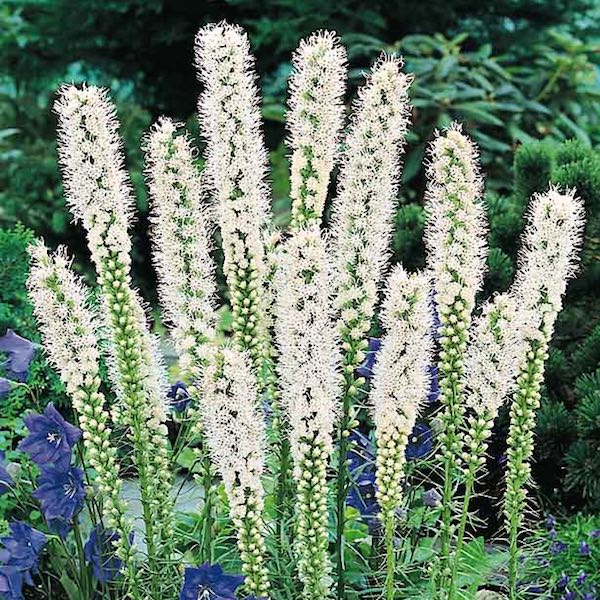
Another representative of the white varieties is Liatris Alba. This variety belongs to the filmy species, blooms from late July to late August. Grows well in a sunny, open area. Winter-hardy.
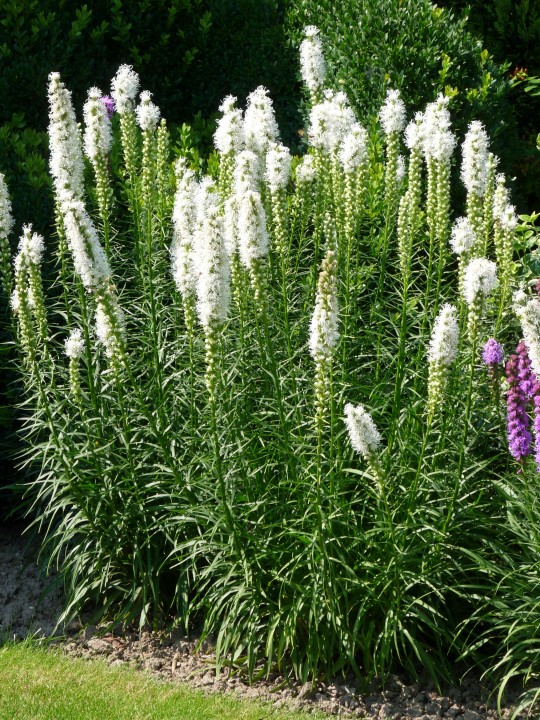
The purple varieties include Floristan Violett. Its sturdy flower stalks reach 80 cm in height, and a purple cap of inflorescences rises above them. Violet is unpretentious, winter-hardy. When planting, it is worth considering its love for the sun, and therefore it is better to place it in open areas.
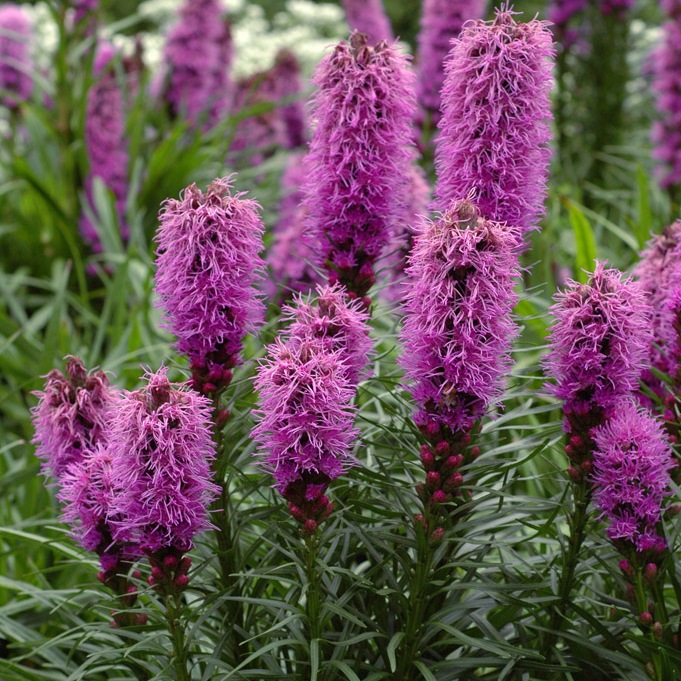
Pink perennial - Liatris Kobold (Kobold) reaches only 40 cm in height. It has narrow leaves pointed at the top. It is popular not only for its color, but also for its long flowering. In small baskets, creating dense spike-shaped inflorescences, from July to September, 10-13 lilac-pink inflorescences bloom. Prefers moderately moist soils and sunny locations.
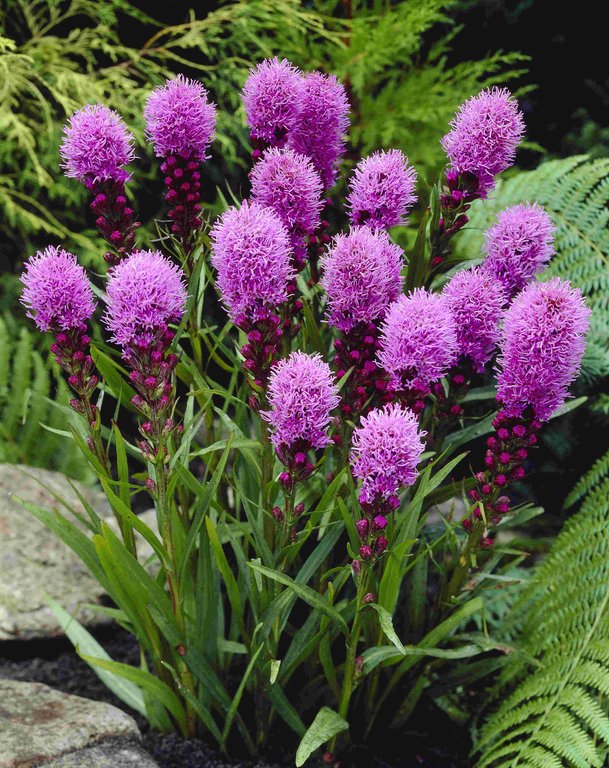
Flamingo is also a chic variety among pink-flowering liatris. The most beautiful inflorescence rises above the tall stem. Blooms profusely from mid-July. Does not require special care, winter-hardy and drought-resistant.
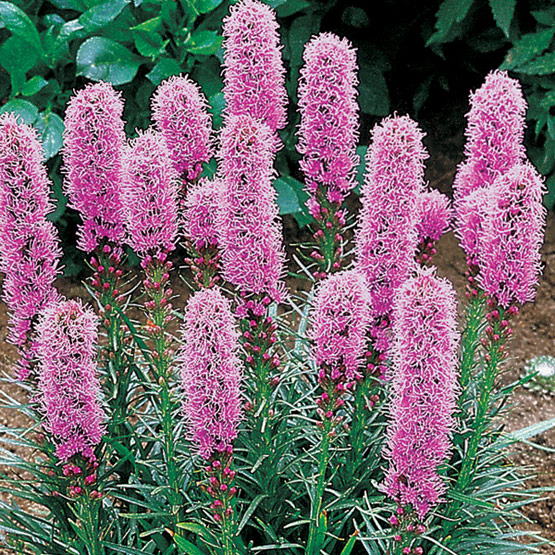
Liatrix Bengal Fire accurately reproduces its name. Purple-red flowers are collected in an inflorescence reaching 35 cm. They seem to light up during flowering and delight them for a long time.
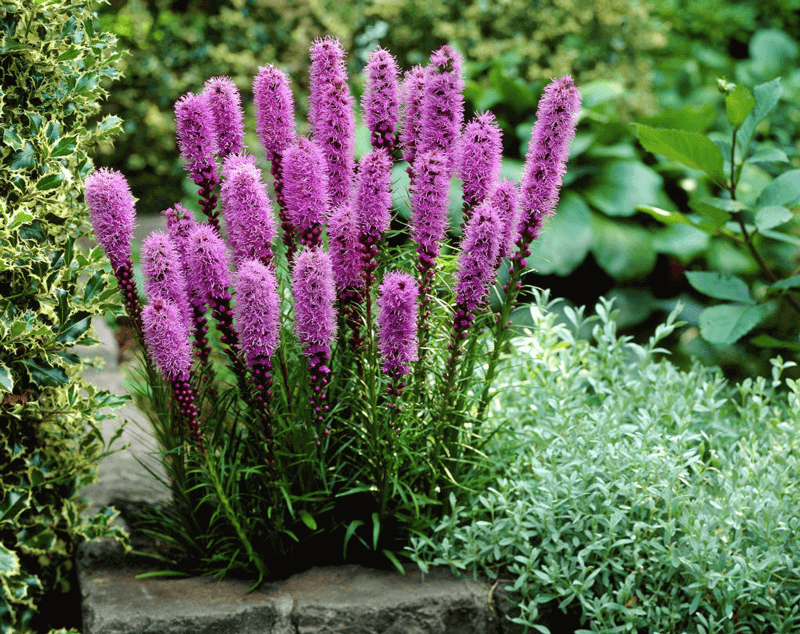
The representative of the lilac-blue varieties is the Blue Bird. This neat, handsome man pleases with aroma and flowering from late June to mid-August. Prefers moderately moist soil and placement in a sunny location.
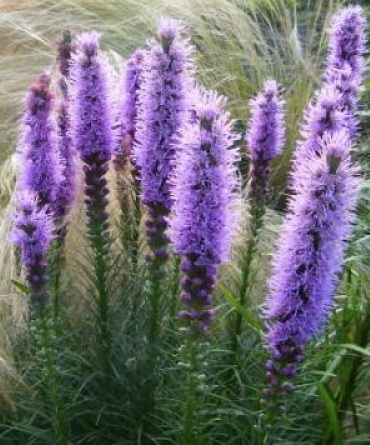
Liatris Spikata Violet-Blue is a plant with an unusually beautiful shade of inflorescences, the stems of which reach 50 cm in height, well leafy. A spike-shaped inflorescence up to 35 cm is covered with small baskets of bolls, which, in turn, consist of 8-13 flowers. Blooms in June, blooms 35 to 40 days.

The purple Pikador cultivar reaches 60 cm in height. Inflorescences are high, bright. It multiplies easily, is light-requiring and prefers moderate watering.
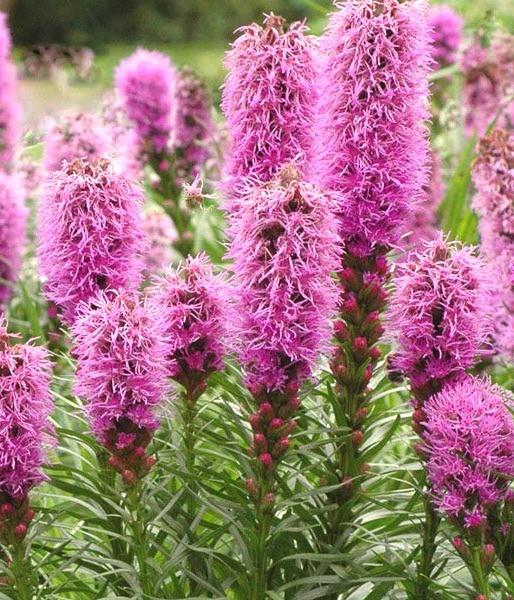
Liatris Burning Star is a plant with purple, like lights, inflorescences. Reaches a height of 65 cm. Photophilous, perfectly tolerates frost, independently sowed. Blooms from mid-July to late August.
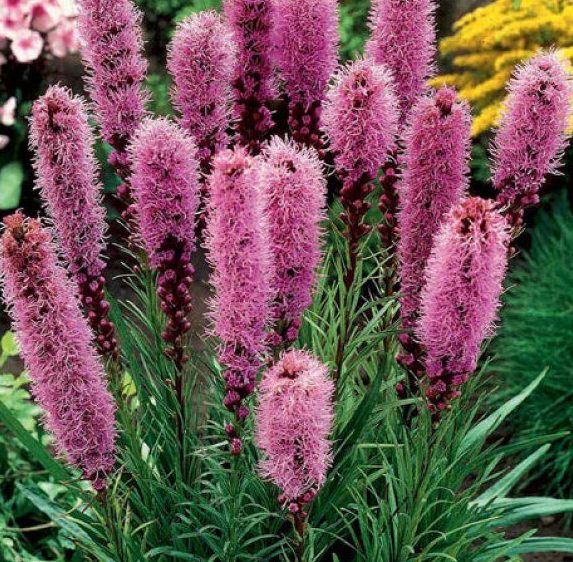
The rough liatris is the tallest species: the stems reach a meter in height. Its inflorescences are long and fluffy, with small flowers. Leaves are shiny, tapering upwards.
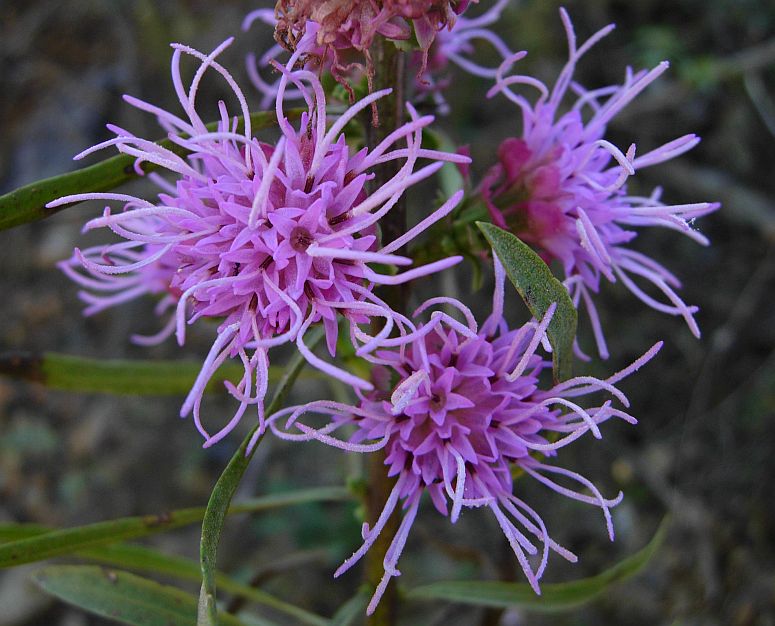
Filmy liatris has wider leaves at the base of the stem, reaching 70-90 cm in height. The inflorescences are large, with many box-like flowers that open from top to bottom.

Diseases and pests
According to experienced gardeners, as well as botanical scientists, liatris is a rather unpretentious and resistant plant that can withstand a large number of diseases, as well as the negative effects of harmful insects. At the same time, organisms such as snails and bears can cause great harm to the plant. If you notice that your flower is suffering from their influence, you should immediately begin the treatment process. The most effective is the folk method.
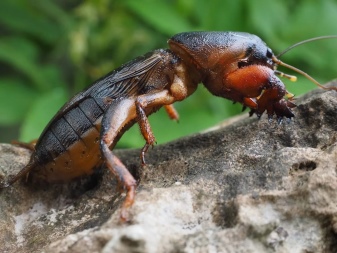

So, to prepare a medicinal solution, you need to take 0.5 cups of beer and put this liquid in a bottle.
This container must be carefully dug into the soil at a 45-degree angle.
It is important that the neck of the bottle is 0.2–0.3 cm below ground level. Insects will fall into such a trap
As for diseases, the most common ailment of Liatrice is rot. It occurs when there is an excess amount of moisture in the soil. The first thing to do is to carefully analyze and, accordingly, reduce the frequency and intensity of watering. The next necessary step is to treat the plant with a fungicidal agent. This disease is difficult to treat.
Types of lyatrix and their appearance
At the moment, most often when decorating a garden landscape design, the following types are used:
Spikelet liatris.
The inflorescence of the flower really resembles a spikelet in shape. The colors of this spikelet can be very diverse - white, pink, purple, red, violet, lilac. The spikelet liatris reaches a height of 1 m.
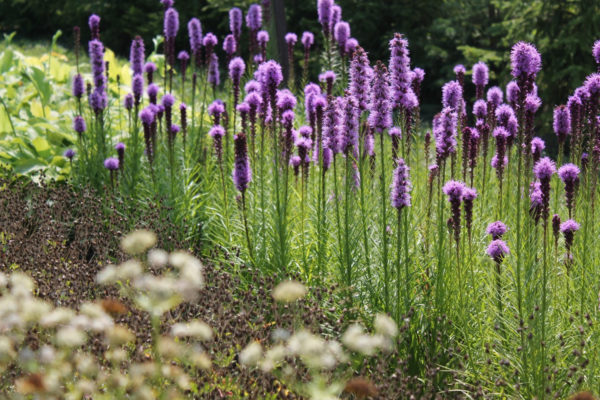
The main flowering time is June-July. At this time, the plants are the most decorative and the flowers are the most dense and double.The most common varieties of lyatrix are florist weiss, florist violett, kobold, flamingo, bengal, bluebird, spiccato, burning star, picador.
Liatris is scarious.
This plant is more stunted and compact bush. The foliage is wider and larger than that of the spikelet. But on the other hand, the color range is more limited - it ranges from pink to purple. The most common varieties of filmy liatris are alba, september glory.

Liatris Alba requires planting and maintenance in the open field, so it is better to reproduce it with ready-made seeds.
If we compare the varieties Liatris spikelet Spicata and Alba, they are similar. Planting and care in the open field is not much different for them.
Another type of this beautiful plant is the rough variety. It is distinguished by the highest bush height. So it can reach up to 2 m. The color range of this species is also limited, like that of the scarious lyatrix.
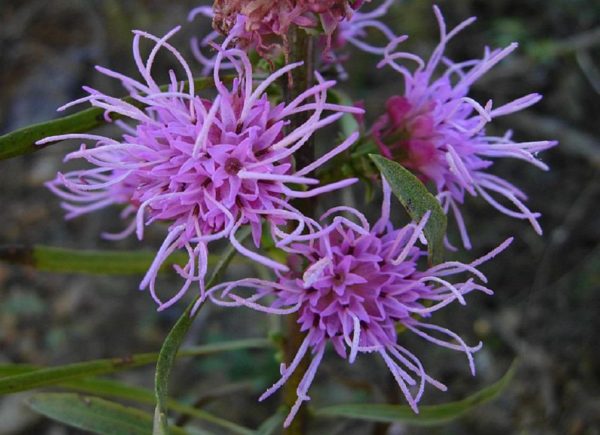
Interesting! There is a single rough liatris variety, which differs from all other varieties of this species in that it has white inflorescences. It's called white spiar.

